what age do you have to be to travel on a plane alone

The golden historic period of air travel is oftentimes remembered fondly as a time of helpful stewardesses and sumptuous airline meals. Yet, information technology was also a time when people didn't need an ID to lath a aeroplane, and smoking onboard was perfectly normal. And until the Civil Rights motion began to bring virtually modify, air travel remained more often than not for white passengers, which is far from golden, indeed.
Modern air travel guidelines and practices may be a hassle, but they're designed to keep passengers safety. And as COVID-19 continues to reshape the world, it's likely that airlines will need to develop new means of keeping travelers healthy and (relatively) happy. Still, we can promise that at least a few of these comforts might come back.
A Different Class of Legroom
1 genuinely positive aspect of commercial flight during the 1950s and 1960s was the ample legroom when compared to today. In the early days of air travel, in that location wasn't a lot of demand for tickets, and airplanes were far smaller than they are today. A standard plan might hold an average of nigh 18 passengers

Consequently, there was an awful lot of room to stretch out and relax. Many seats could recline into twin-sized sleepers without bothering the passengers in other rows! Some airplanes even had train-style seating that allowed big groups of passengers to sit together. While it's possible that COVID-19 concerns might lead to more space betwixt seats in the future, it might be best to believe it when you come across it.
Snooze in Style
In addition to seats that could fully recline, many airlines had sleeping cabins that hung above the traditional seating. That'due south right: Instead of storing-away extra luggage in the overhead bins, people stored themselves!
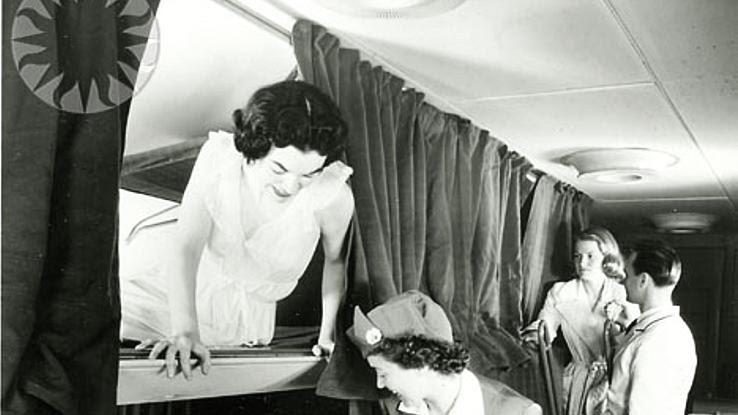
These small-scale overhead cabins came with a privacy pall though other amenities for sleepers were thin. The mattresses were incredibly thin and uncomfortable, every bit were the complimentary pillows and blankets. Even so, information technology was probably an immense relief for families traveling with children, equally parents could send cranky tots up to their bunks.
Breaking Out the Fine People's republic of china
Information technology'due south no hole-and-corner that airline nutrient can be awful. The pre-packaged, overly salted meals that near airlines serve are a far weep from the fare in traditional kitchens. Nonetheless, the airline dining experience wasn't always equally low-quality as passengers today have come to look.
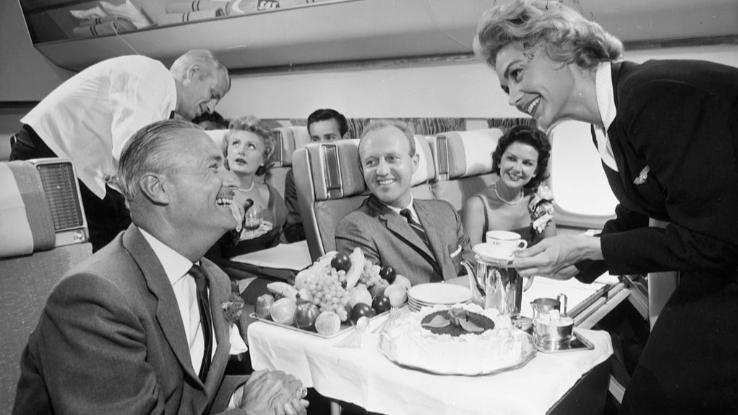
Decades agone, people ate from delicate dishes and drank from actual drinking glass cups. Besides, nearly airplanes had small electrical ovens to heat premade gourmet meals for passengers. Today, extremely small in-flight kitchens and food storage areas mean most passengers' high distance dining experiences simply aren't what they used to be, and they're not likely to return.
What's on the Menu?
So what did people eat with their fine cutlery on plans back in the day? Standard menu options included grilled filet mignon, cheese platters, vintage wines, roasted turkey, and caviar.

Regionally-themed meals were too pop. Flights to Japan might include a broad range of Japanese culinary delights, including chicken teriyaki, while trips to France might exist accompanied by rich, French wines. Substantially, passengers got to experience a taste of their destination before arriving!
Minorities Weren't Welcome, Which is Terrible
The starting time commercial flights were expensive, which limited the types of people who could beget to travel by air. Merely the wealthiest people could initially beget the fare. But on pinnacle of that, open up racism was much more commonplace since the Civil Rights Act of 1964 didn't be nevertheless.
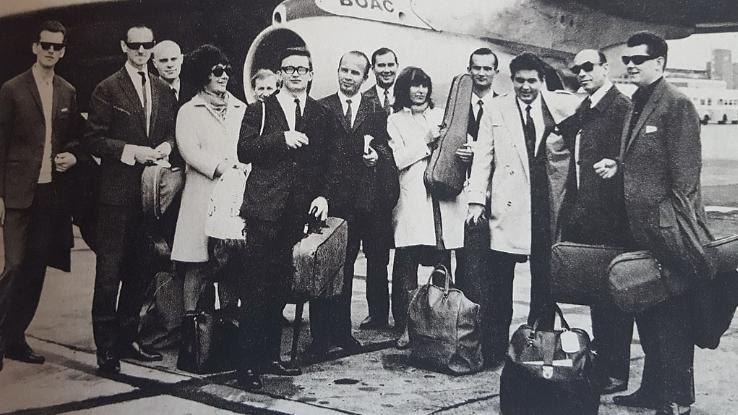
Consequently, nearly all of the start airline passengers were white. The only people who weren't in airports were baggage porters and (later) the occasional stewardess. Some airlines even tried to teach their agents to place black voices and isolate blackness passengers on their own flights. Absolutely horrendous.
Yous Might Demand a Chiropractor Afterward
Dorsum in the blackness-and-white days of the 1950s, commercial airplanes didn't fly very high. That'south because they didn't use jet engines. Instead, these early on passenger planes were powered by pistons, the aforementioned mechanism that powers gasoline engines.

Withal, because these engines weren't as powerful as modern ones, they had more difficulty moving through the air smoothly. Turbulence was a existent problem, and passengers regularly came off planes with extreme back pain from bracing against all the shaking.
Things Got Messy
The problem of combining fine dining with extreme turbulence is the latter quickly makes the former into a real danger. Take this carving cart, for example. Certain, it looks fantastic, and the food quality is plainly exceptional. But the turbulence in planes back when this sort of service was provided meant that it was also potentially dangerous.
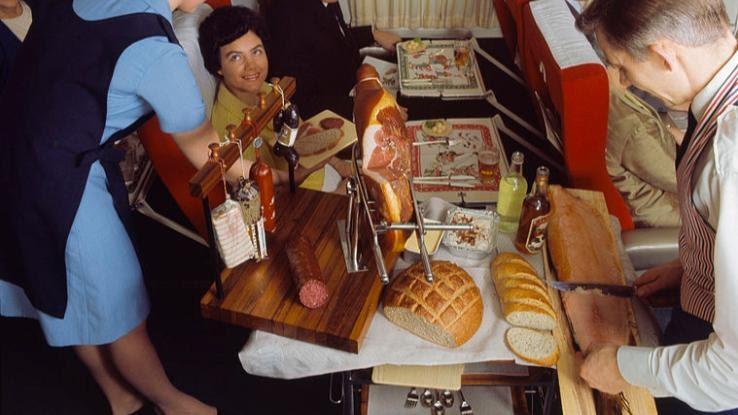
Ironically, the advent of jet engines and the subsequent decrease in turbulence made meals like these much safer to serve. At present, however, there'south neither the room nor the upkeep for this sort of corrupt service.
Clear Skies, Smokey Cabin
Secondhand smoke is still a divisive issue, merely most people know non to fume in public areas — in fact, it's ofttimes prohibited. Still, smoking was once allowed almost everywhere, including airplanes. While this might non have been a massive outcome for smokers, information technology certainly didn't brand travel pleasant for those who didn't.

In retrospect, information technology'south like shooting fish in a barrel to imagine that a expert bargain of movement sickness while in flying was the direct consequence of smoke inhalation. After all, planes were far slower in those days, and concatenation smokers could rapidly kill a few packs of smokes while airborne.
Fourth dimension to Spare
Today, information technology takes just nether a full twenty-four hour period to wing from Sydney, Commonwealth of australia to London, England, simply in the 1950s, the aforementioned journey took about iv days, and sometimes longer if there was rain. Information technology wasn't just international flights, either — domestic flights were just as lengthy.

The weaker engines on planes of the time meant that not only could they not fly as fast, but they also had to wing lower in the atmosphere, where the air is thicker and in that location's more resistance. As a effect, it was often faster to bulldoze to your location than to wing there, specially if you lot were traveling domestically.
Tiny Planes
Passenger planes weren't always the size they are today. In fact, it'southward challenging to comprehend just how modest commercial planes were in the mid 20th century. To get a improve sense of the difference, let's compare sizes.

A Boeing 747, one of the nigh widely-used commercial planes currently flying, is just over 250 feet long. In contrast, the Boeing 377 Stratocruiser, i of the predecessors to the 747, topped-out at near 110 anxiety long. That means that the biggest and blue-chip commercial planes of the 1950s were less than half the size of mod jetliners.
Pricey Services
Sure, flying ticket prices spike periodically with holidays and natural disasters. However, near fares remain consistently affordable, ensuring that passengers from most socioeconomic backgrounds have the opportunity to travel. However, that was not the case during the golden age of air travel.
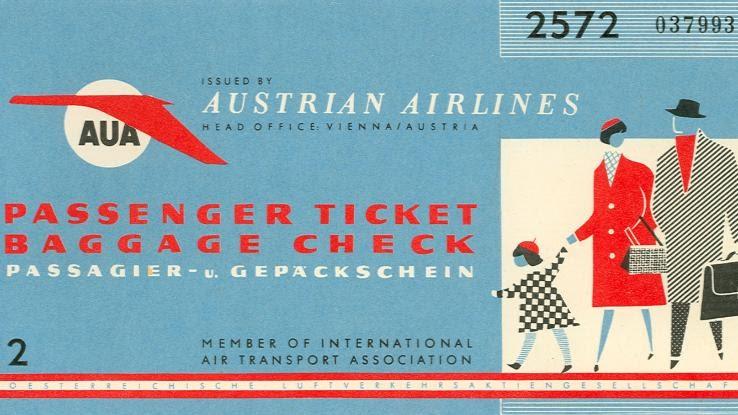
A ticket to an international destination could current of air-up costing near v percent of the average person'southward almanac salary, and domestic trips weren't much better. The result was that flight was only available to the wealthiest and near daring consumers, with most beingness white businessmen.
Dressed for Success
Today, it's not unusual to come across other passengers wearing sweatpants and a ratty T-shirt for a flight. It makes sense; if you're going to be stuck in cramped corners for hours, you lot might every bit well exist comfortable, right? In the 1950s, still, the mentality of passengers was completely unlike.

While many planes had dress codes, flights were often seen by special events, so they showed up in their finest dress. That'due south why people in old photographs always look and then glamorous. If you notice yourself feeling nostalgic, even so, only think of spending a flight in a bow tie or heels with other people sweating through hot blazers and dresses.
Cleared for the Rail
The simply folks allowed on the airport tarmac today are baggage handlers, security personnel and mechanics. Merely, in the 1950s, everyone was welcome to hang around outside earlier boarding the aeroplane. That'south because near airports were unmarried-story buildings with a few ticket counters and restrooms and non much else.
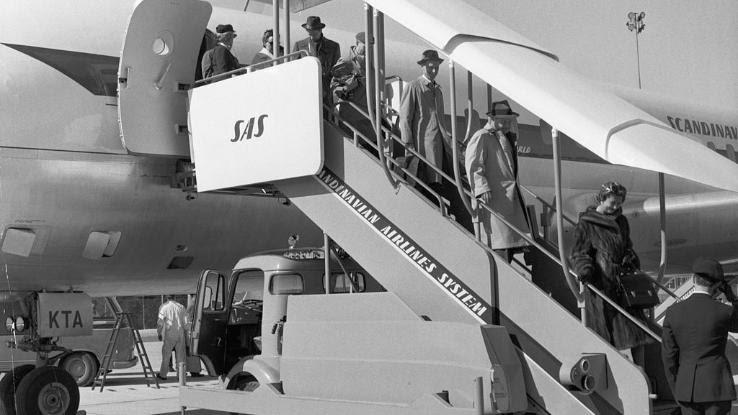
If you wanted to encounter your loved ane earlier they boarded, y'all just walked onto the tarmac and waved at them as they walked upward a transportable set up of steps. While loitering certainly wasn't encouraged, at that place were no TSA security checkpoints anywhere. Endeavor and pull something like this today, and Homeland Security is sure to want a word with you.
Stewardesses, Non Flight Attendants
While we may have flying attendants today, the travelers of the past had stewardesses. They may sound like the aforementioned thing, only in practice, there are some shocking differences. For starters, gimmicky flight attendants can exist of any gender, race or religion. Stewardesses, all the same, were always female, dressed somewhat suggestively and were advisedly screened by their employers for looks, weight and behavior.

Although flying attendants today have harsh standards of their own, they're yet nowhere about every bit limiting as what stewardesses faced. Yet, it was an exciting opportunity to run into the earth and earn a piffling money at a time when both could be difficult for women to practice.
Beauty Standards
What were the requirements for women who wanted to exist stewardesses? Simply the almost attractive, thinnest and almost malleable young women were hired and trained for the position. They were expected to article of clothing high heels, go on their hair and makeup looking immaculate and tend to all of their guest's needs. They were also encouraged to stay single to avoid getting pregnant.

It is heartening to know that equally times changed, then did atmospheric condition for this job position. Stewardesses and the people who dreamed of becoming them raised their voices and fought against unfair standards in their industry, and eventually, airlines inverse how they did business organisation.
Free Postcards
During the showtime decade of commercial air travel, you lot'd get a nifty little postcard every time yous boarded a plane. While you couldn't send the postcard while flying, the thought was that yous would write downwardly your in-flight experience on the postcard and then mail information technology once you'd reached your destination.

There's no dubiousness that this was a marketing ploy to become flyers to glamorize their travels to friends and family, but it also encouraged people to reflect on their travels and accomplish out to the people important to them. Information technology might not be equally nice every bit legroom, but this is some other practice that could do with a comeback.
Security Was Virtually Non-Existent
The first airports didn't await or operate like mod airports. They were more than like somewhat empty train stations made more for looks and temporary shelter than anything else. They typically had a handful of counters where people could buy tickets, but they didn't take much else. Baggage carousels and duty-free shopping malls were yet to come.

Because so few people could afford (or were brave enough) to fly, airport security protocols were too lax. Passengers didn't need to show identification to lath a plane, and luggage restrictions were sparse. Because of that …
Plane Hijackings Came Into Fashion
While September 11th fabricated many Americans accept plane hijackings seriously for the commencement time, they were a trouble long before that. If the '50s were the gold age of flying, the late '60s and '70s were the golden historic period of plane hijackings.

Everyone from aggrieved nationalists to people trying to defect to or from communist states seemed to have a plan for hijacking a plane, and they were successful shockingly often. However, in those days, it was rare for anyone to really die in one. Hijackers generally weren't interested in killing people, and airlines had a policy of full compliance with hijacker demands. It wasn't until the 1970s that people began to die more frequently, and even so, the hijackers themselves didn't plan on dying.
Engines Falling Out of Planes
Flying has become significantly safer over time. Today, there are 1.33 deaths caused past aeroplane accidents for every 100,000 hours spent flying. Back in 1952, however, that number 5.2 deaths — near four times higher. That number only becomes more impressive when you consider that American airlines at present carry around 42 times the number of passengers that they did 60 years agone.

So what acquired these accidents back in the '50s? A lot of things. In-air collisions were much more mutual, while weather conditions like fog that don't seem hazardous today claimed their share of lives. Planes in general were besides less reliable, with engines sometimes even falling out of planes. Yet, every bit long as the plane safely landed without casualties, airlines didn't count information technology every bit an accident.
Open Bar for Everyone
An open up bar can be a unsafe affair. While drinking proved to be (and still is) a popular way to pass the fourth dimension while upward in the air, when combined with other aspects of mid-century air travel, such as the higher levels of extreme turbulence, it added to the full general mayhem of early flying.

At that place were also some pretty bizarre rules effectually alcohol consumption. Without specific regulations for flights, planes were jump by the laws of whatever state they were flying over. Flight over New Jersey, for instance? Drink up. The moment the plane went over Pennsylvania, however, drinkable service was temporarily suspended.
There Were Baggage Handlers to Carry Your Things …
Because the standard baggage carousel had not yet been invented, most air travel passengers relied on baggage porters to load and unload their luggage. Baggage porters still exist, simply they primarily piece of work away from the public heart. During the golden historic period of commercial air travel, baggage porters had but a wheeled cart to help them move massive trunks and numberless.
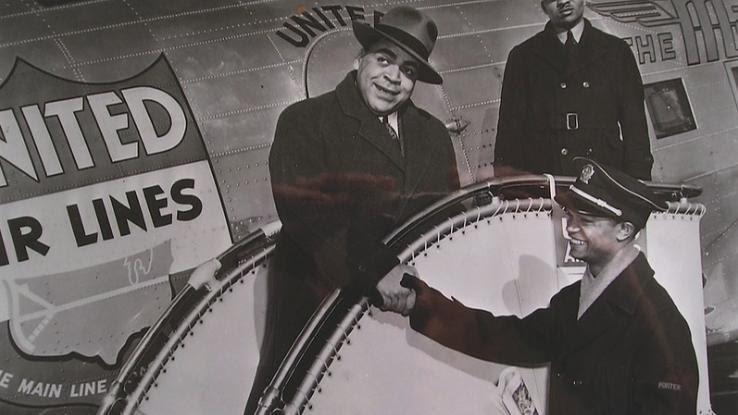
Interestingly, baggage porters weren't employed by the airports, merely the airlines. Consequently, porters were required to nourish flights and help stewardesses with their in-flight duties.
… Just That Wasn't as Helpful as Yous Might Call back
While there was the expectation of tipping baggage handlers, you might think that was a fair merchandise off for quickly moving your bags from place to place. The rush to go off the plane might not be and then bad if you can count on someone getting your bags for you at the cease.

Although the smaller number of passengers did help with disembarking quickly, one time off, the wait for your luggage could take a shockingly long fourth dimension. A skycap would place each person's luggage on the counter without the assistance of a conveyor chugalug. Yet, you couldn't but take your bag; instead, you had to wait for the skycap to come to you, at which point you would point to your handbag and it would exist brought to you. Suddenly, waiting at the carousel might not seem so bad.
Lounges — simply Not the Ones You lot'd Remember
To go along passengers from falling victim to cabin fever during a long flight, many commercial airplanes had lounges where travelers could see and have a piddling fun. Of grade, quite a lot of these practiced times were fueled past complimentary alcoholic beverages.
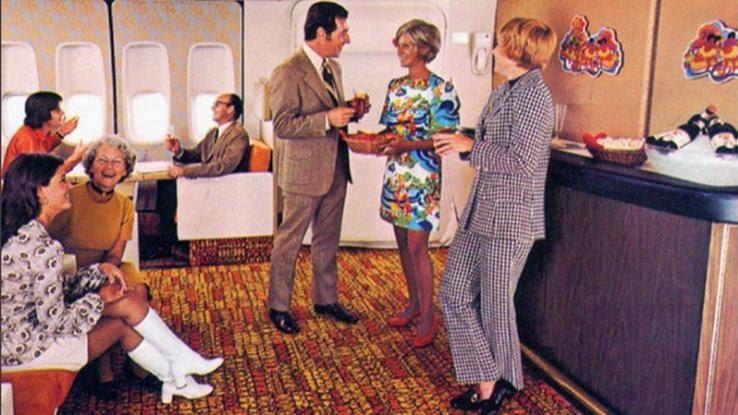
While the disappearance of onboard lounges could be attributed to increased seating capacity, there's also a more unpleasant reason: drunkenness. On elevation of being clumsy or rowdy, intoxicated passengers were more decumbent to throwing up. Combined with the turbulence and close quarters, things could go ugly fast.
How Many People Does It Accept to Fly a Aeroplane?
Every plane needs a airplane pilot. And a copilot. And if it's the 50s, a flying engineer (also known every bit an air mechanic), radio operator and navigator. While automation and budget-saving measures have seen kickoff the radio operator and navigator and so the flying engineer removed from commercial flights, once upon a fourth dimension, these positions were entirely necessary.
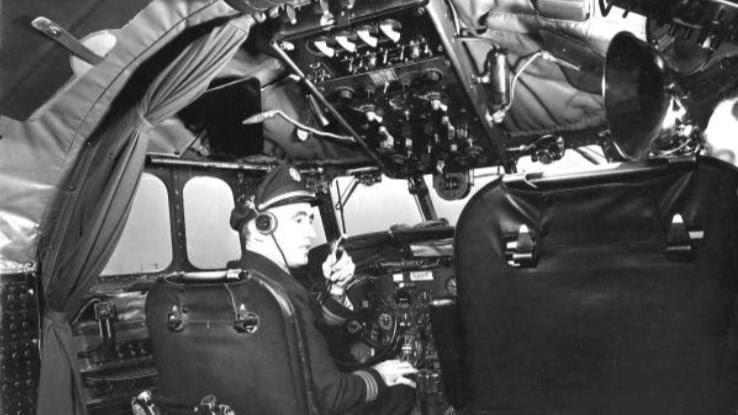
The flight engineer managed some of the more circuitous systems on the plane and troubleshooted problems, while the navigator used a sextant to trace the location of the plane. (Retrieve, at that place was no GPS!) In addition to speaking with people on the ground, the radio operator kept the radio working and transmitted and received other information.
Enough of Attention
Because businessmen were the chief audience for the first commercial airlines, airlines did everything they could to cater to the specific needs and wants of that grouping, including training attractive immature women to become skillful stewardesses. Because seats were scant, in that location was likewise a lot of attention to go around — almost i stewardess per passenger, depending on the flight.
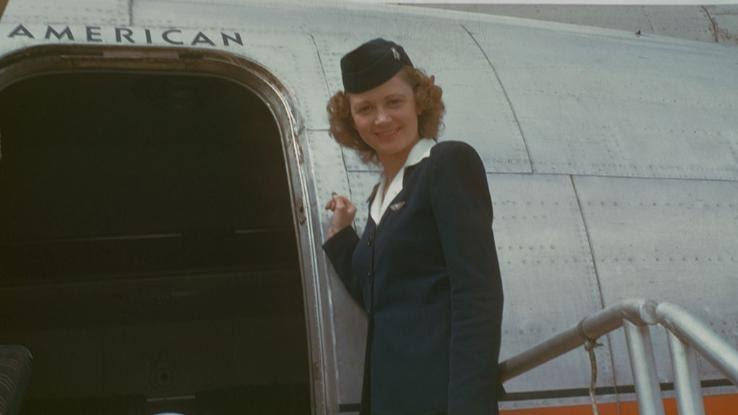
Consequently, these employed young women were encouraged to spend their time chatting with passengers. Lonesome business travelers were treated like royalty and given plenty of one-on-1 fourth dimension with their favorite stewardesses. While it was surely fun for passengers, it must have been exhausting for the stewardesses.
Fabric Was Everywhere
Some golden age airplanes had interiors that looked like customs theatres: Every square inch of wall and flooring space was plastered with fabric. Thick, heavy materials helped conceal the deafening roar of the piston engines, and they too helped to lessen injuries caused by sudden turbulence.

Before manufacturers began outfitting their planes with cloth, accidents were common. Commercial aircraft were designed to exist elegant rather than safe, with many interiors featuring precipitous corners and glass dividers. When turbulence arrived, passengers could speedily discover themselves in genuine physical danger. Thank goodness for fabric!
The Cabins Probably Didn't Smell Great
You lot might remember that you take it bad just dealing with other people'southward body odor on a flight, but for passengers in the 1950s, it was a lot worse. On summit of the tobacco smoke and B.O., the air inside of a plane back then was a mix of food smells, alcohol fumes, perfume or cologne and vomit.

It's difficult to imagine that anyone could exhale easily on 1 of these flights. If you lot weren't lighting up a cigarette or cigar, you were likely drowning your anxiety with alcohol. And when turbulence hit, motion sickness was quick to follow.
The Existent Golden Age of Air Travel?
If the '50s weren't all they were made out to be, was at that place ever actually a golden age of air travel? Yous could make an argument for the 80s. While smoking and hijackings remained bug, you could still get a costless meal onboard. On superlative of that, flights were ofttimes less than full, meaning the middle seat unremarkably wasn't taken. Fifty-fifty if it was, at that place was still more leg space than at that place is now. Add to that the smooth ride of jet engines, and the '80s don't seem bad at all.
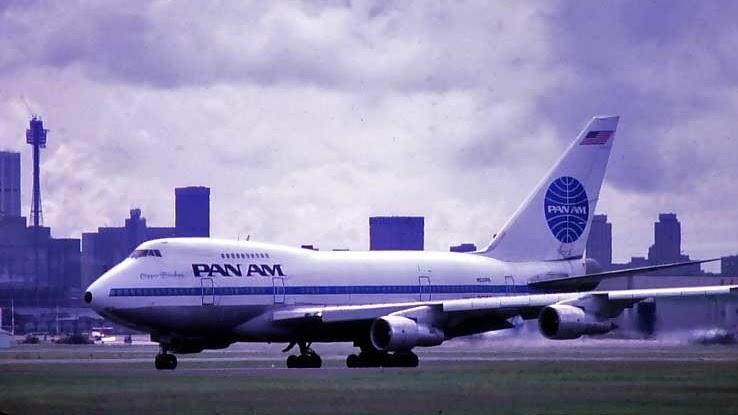
However, some of the issues nosotros have today are too the outcome of the '80s. Before then, luggage was always stored under the plane, but by the stop of the decade, people wanted to conduct their things with them — and that led to the crowded overhead compartments we have today.
What Goes Around Comes Around
If you're longing for the age of smaller flights with more leg room, you're in luck — if you tin consider a global pandemic to be a fortunate outcome. Many airlines now merely sell tickets for end and window seats, leaving enough of room for feet and numberless akin.
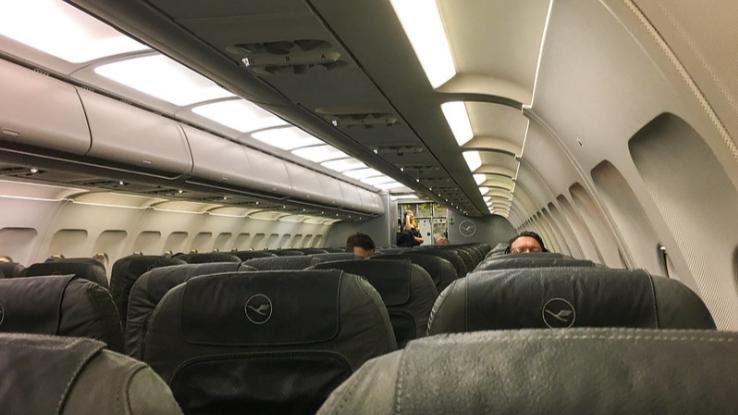
Notwithstanding, extra space isn't everything from the '50s that's returned. Many airlines but offering five to ten percent of their pre-pandemic flights, and with fewer passengers on each ane. While you might remember that ticket prices would autumn as a consequence, in many cases, the reverse has happened. Because of acquirement losses and the fact that few people are willing to risk their lives merely for a cheaper flight, prices are fairly loftier, and they might stay that mode for some fourth dimension.
A New Era of Flight
Just every bit the '50s were an age of flying never to be seen again, and so too is everything we used to know well-nigh flight. For instance, while we might look dorsum on the golden age of air travel every bit a time of naive innocence due to the lack of metal detectors, society may come to have the same view on the 2010s and the absenteeism of thermal scanners and no-touch thermometers to find people running fevers.
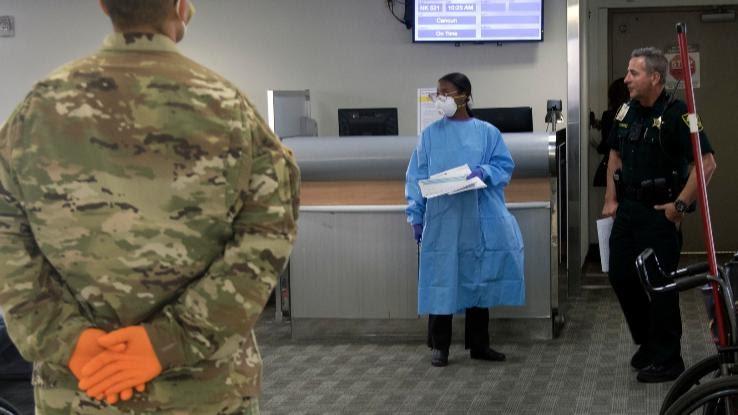
Nevertheless, if the differences between the '50s and at present show us annihilation, it's that while some of these changes might be for the worse, others might exist for the better. From smoke-gratis cabins to in-flight movies instead of postcards, a lot has changed for the better as well, and history suggests that will happen over again, even if there are some growing pains — and cramped leg space — along the manner.
petersonsuind1974.blogspot.com
Source: https://www.ask.com/travel/golden-age-of-air-travel?utm_content=params%3Ao%3D740004%26ad%3DdirN%26qo%3DserpIndex
0 Response to "what age do you have to be to travel on a plane alone"
Post a Comment